Video exampler: coming soon…
Video tutorial: coming soon…
Recommended prerequisites: cartwheel
Description: The orthodox cartwheel is the name I give to the one-handed cartwheel variation that makes use of the first hand. Because, well, you have two hands. And you can do a one-handed cartwheel with either one of your “one hands,” so why not assign cool names to things so that I feel original, creative, and special?
One-handed cartwheels are used to bridge the gap between the cartwheel and the aerial. I like starting with the orthodox version rather than the southpaw version, because it feels more natural to me. Both have their insights though.
Slide by slide breakdown
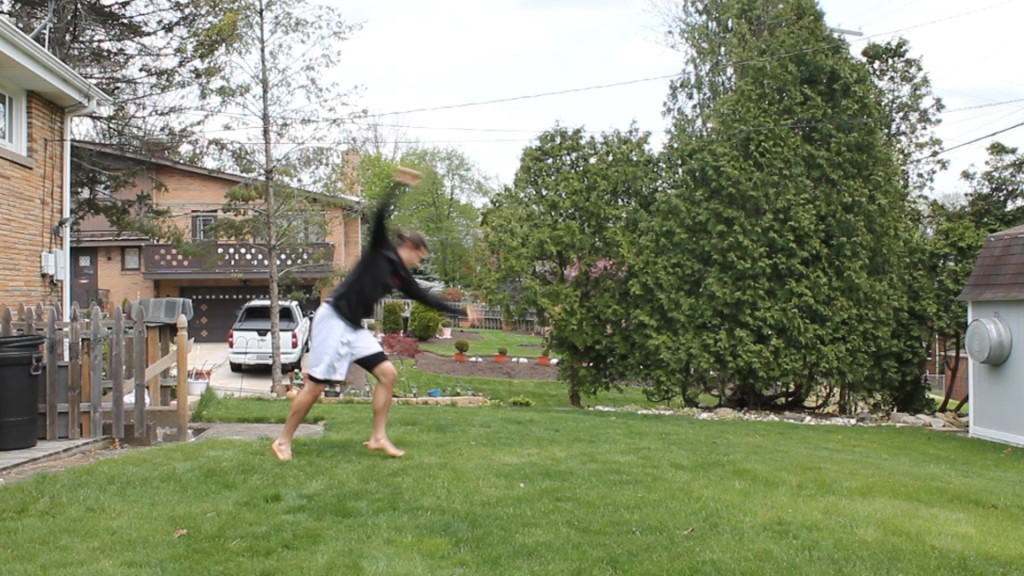
Looks like a cartwheel, doesn’t it? That’s the way you want it. Approach the move as much like a cartwheel as you can. Don’t freak out because you’re only using one arm. In fact, trick your body into thinking you’re using two. You might want to give your takeoff a bit more juice to compensate, but — yeah. Trick yourself into thinking you’re going into it with two hands.
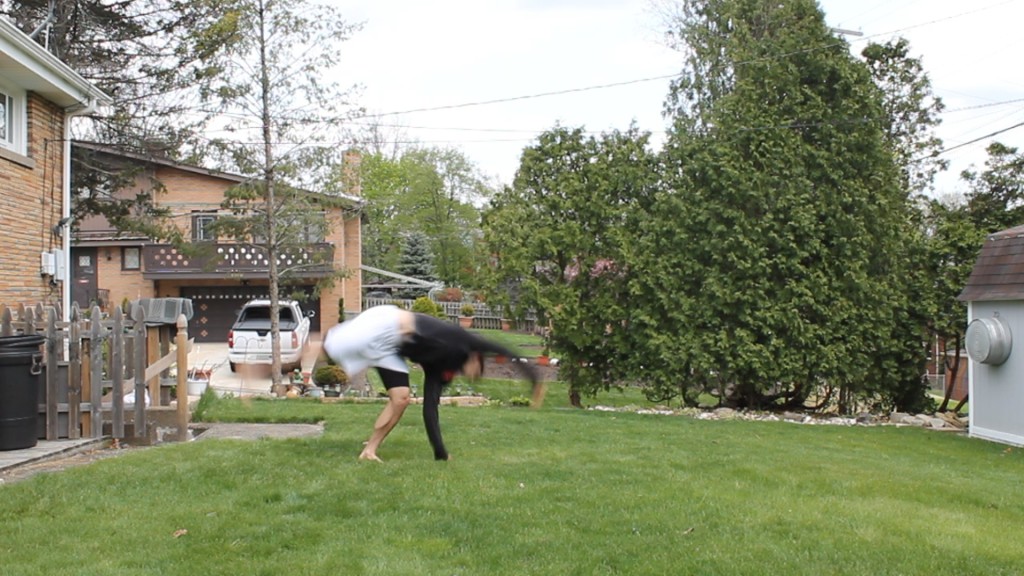
Things should look familiar. Lead leg lifting with some vim. (We lifted with vigor last time, so why not change it up?) Lead arm on the ground plants forward of the lead leg — reach forward. Trailing arm is starting to slink overhead, which is opening the shoulders and turning the torso.
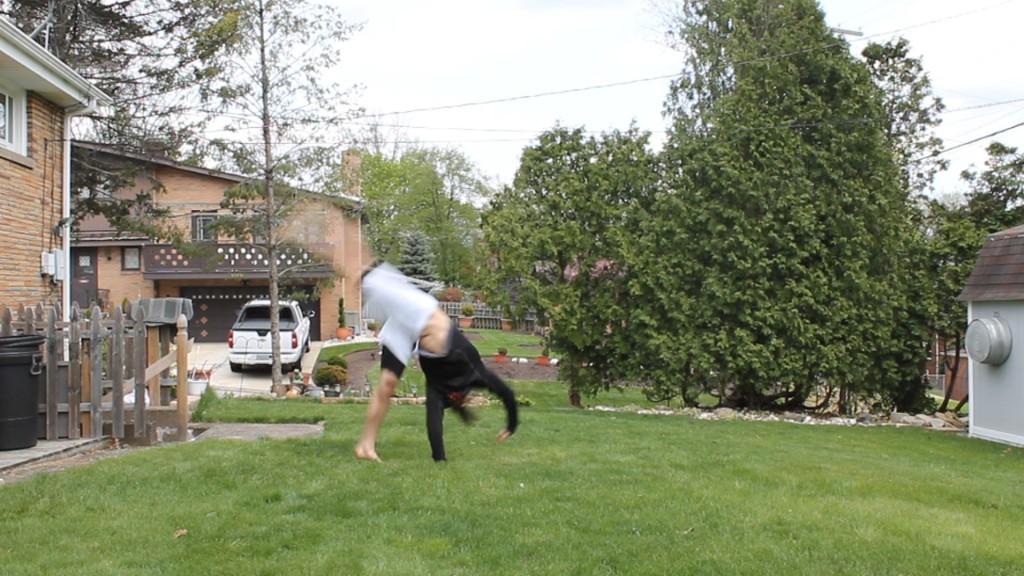
Still very cartwheel at this point. Try not to look at the mangled flesh around my belly button. It’s visually sucking me in like a hypnotist right now. Self conscious thoughts are starting to kick in. I mean, it doesn’t even look like a belly button. It looks like the gaping maw of a black hole.
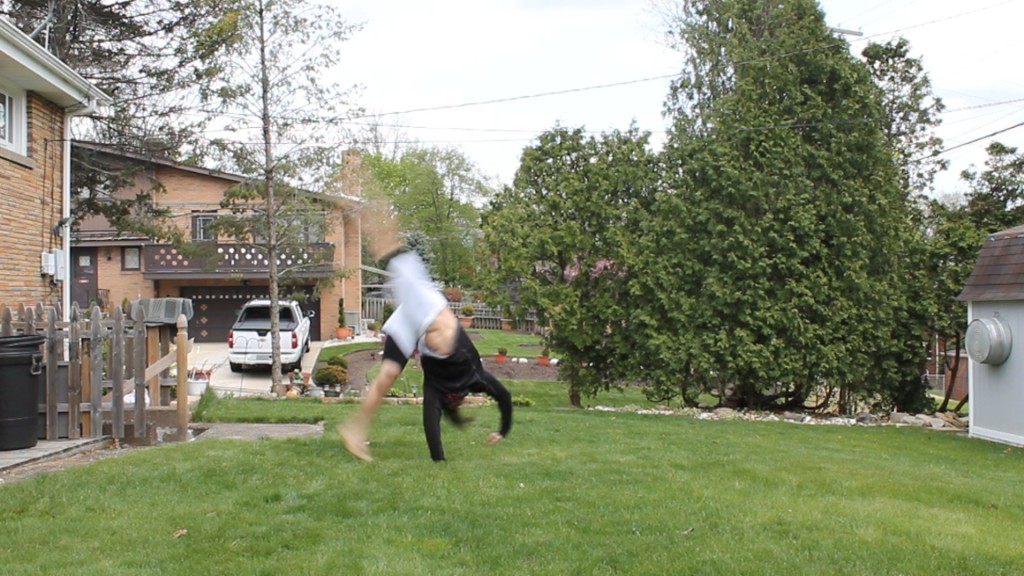
Very similar to the last slide, but this is what it all looks like whenever my trailing leg finally gets off the ground. If this were a normal cartwheel, my trailing arm would be really close to planting (if not already planted) on the ground. Here though? It looks like it’s on its way, but…
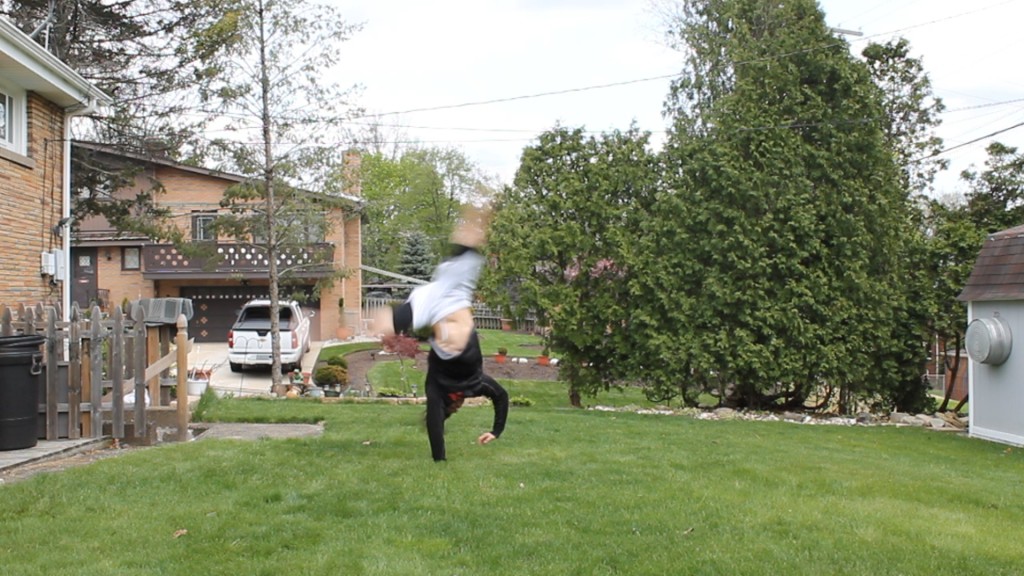
I’m not sure what I like more about this slide: the fact that my legs are swooping through so fast that you can’t see them, or the fact that you can see how I’m psyching my body out of touching the ground with my trailing hand. It’s hovering. It wants to go down. I told my body it would. But I’m resisting.
Look at last slide. You can see that, compared to this slide, I’ve actually retracted my free arm a bit. Point being that I’m still acting like it were planted (or that I planned on planting it).
Like I mentioned in the cartwheel tutorial, don’t worry about the legs. They’ll handle their own business if you lift the first one hard and high. Right now we need to focus on the shoulders, specifically what to do with the shoulder of the now free arm.
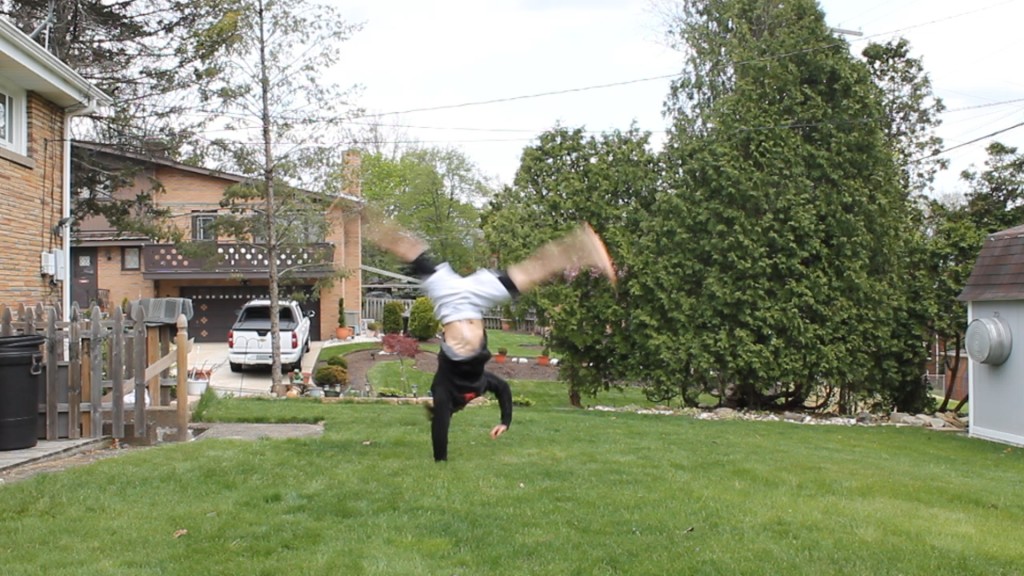
Alright, so the important part about last slide that you need to inject into your cranium is that even though this is a one-handed cartwheel, you don’t totally neglect the arm that doesn’t touch the ground. You don’t shove it in your back pocket and hope for the best.
By taking it through the standard motions, you’re making your shoulder do the work it needs to do to get your torso situated and turned over. So with the free arm, try your best to still slink it over top your body (remember having your arm by your ear in the cartwheel?) so that your shoulders still turn over, allowing you to land square. Act like you’re going to put it down, but then retract it at the last second.
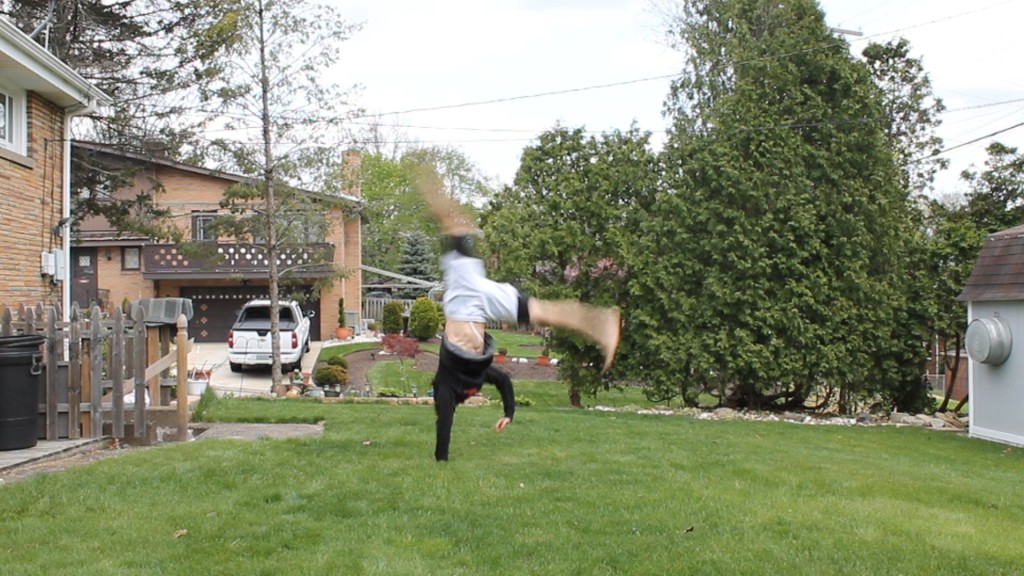
If you don’t use that shoulder and slink it over the top, then here’s what will happen. Look at the above slide. See my right arm still hovering? Actually, it’s doing more than hovering. It was hovering a few slide ago, but now I’m using that shoulder to help turn my body over — it’s to the right of my lead led. (We talked about this before with the cartwheel, by the way.) If you don’t get your shoulders turned over, here’s what happens.
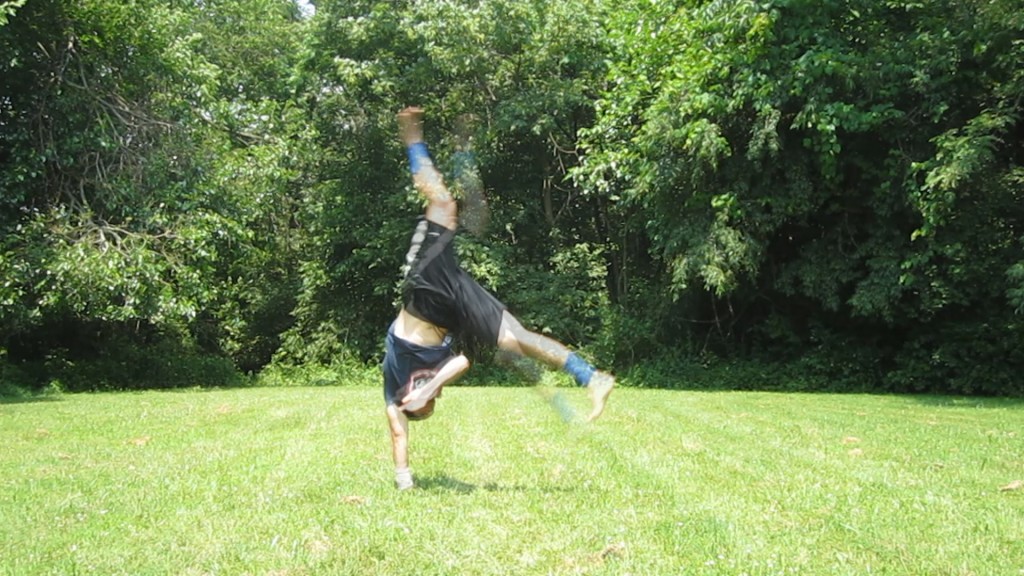
See how my right arm got stuck on the inside of my leg? Yeah. You don’t want that. Like I told you before, it’s possible to get mangled all sorts of ways, and I was mangled for a long time. Being a backyard trickster without formal instruction, it’s alright. We do stupid things at times, but that’s what the learning process is all about.
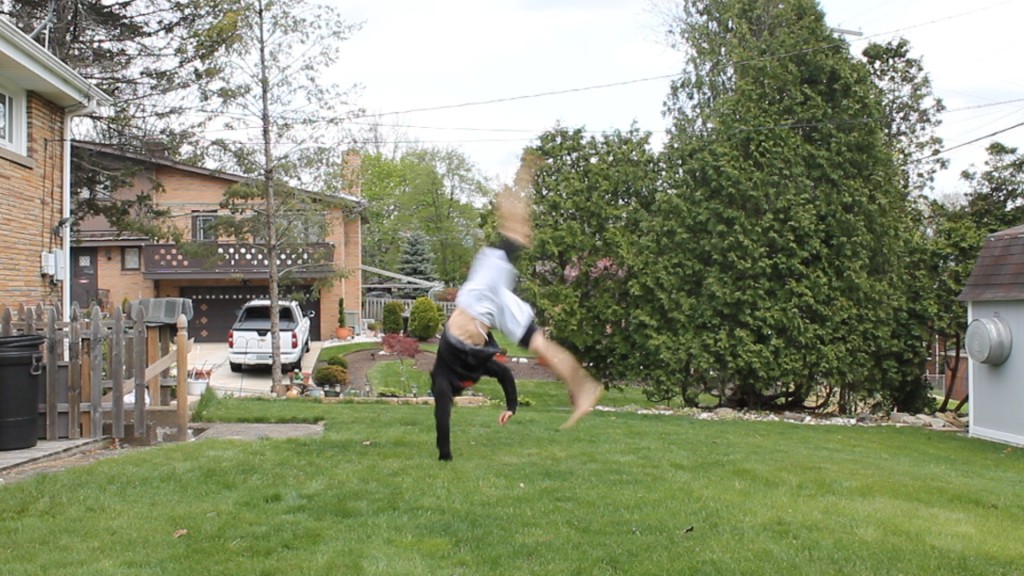
So here’s where the orthodox cartwheel helps you with the aerial. Instead of getting that second arm (the free arm) mangled in front of your body, you kind of want to think about retracting your shoulder blades and opening up your chest.
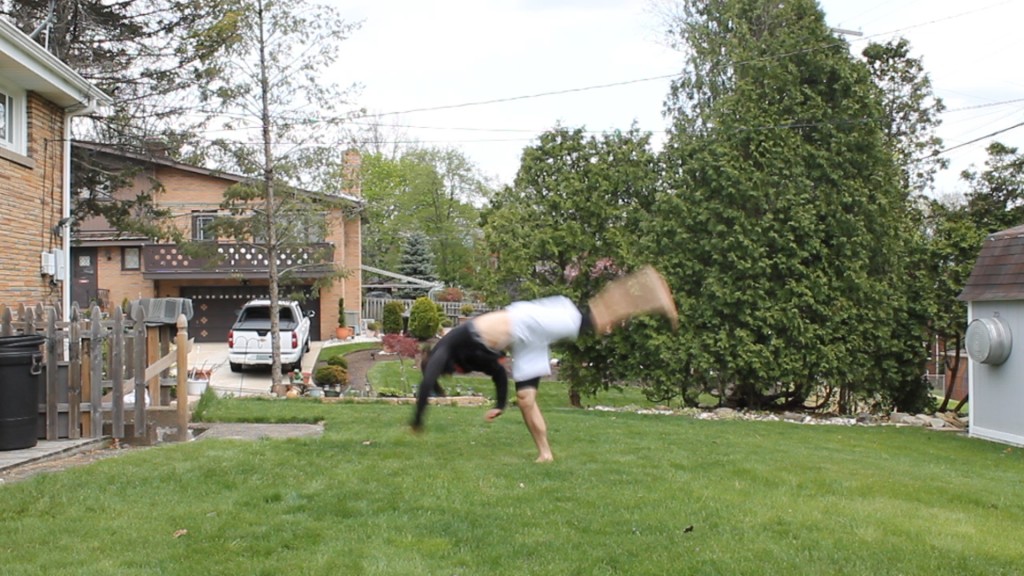
What is this retracting and opening business? Take a look at the above slide. Get into that position right now, but have your left arm planted on the ground. From there, move your free arm around. Feel the difference between having that arm mangled and coming across your body (bad), and having it to the outside of the landing leg (good) like it is in the slide above.
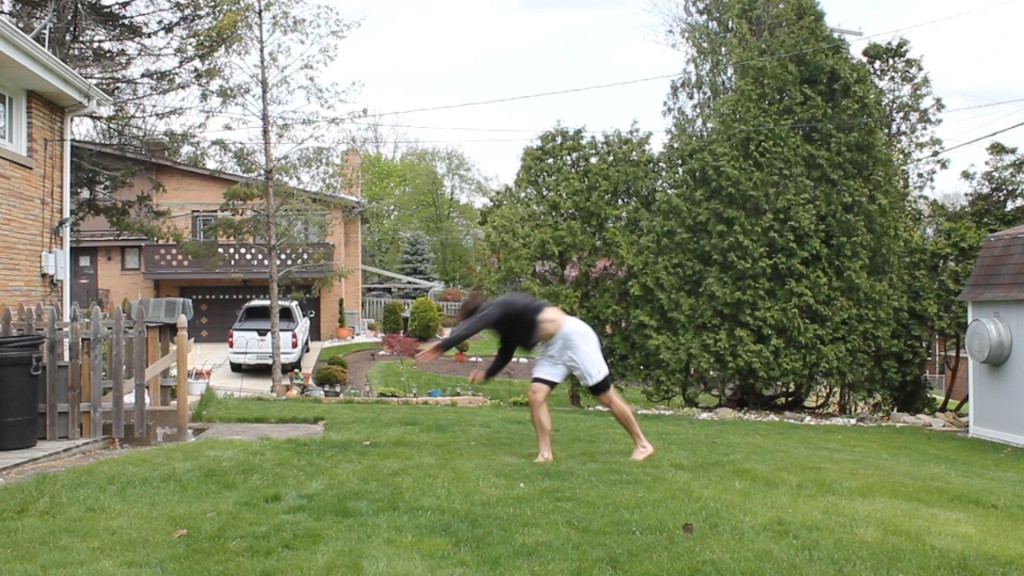
It actually looks like I’m going down for a cartwheel doesn’t it? There’s probably some wisdom tucked away in that little giblet of information, but I’m not smart enough to extract it.
Recap cues:
- For the lifting leg, think about lifting hard and high.
- Act like your free hand is going to touch the ground — it doesn’t get to fall asleep.
- Slink your free arm over the top and open your chest so that it doesn’t get mangled.
Troubleshooting:
Hand touching the ground? You might get into the habit of having your hand come down and touch the ground even if you don’t want it to. This is a normal pseudo-safety mechanism. You have to override it, and it might take a few crash landings to make it happen. You can also think about going down with fingertips or gently grazing the grass with your hand.
Landing on your side? If you’re getting one arm down, but just sort of toppling over onto your side, you’re probably either (a) giving up, or (b) not coordinating your body right. Keep practicing. It is harder than a normal cartwheel and does require a bit more spunk, effort, and coordination.
Landing to your side? If you’re landing with your shoulders open, you probably aren’t working your magic on the free arm. Try to slink it over the top more.
Legs bent? That’s alright. Bent legs fix themselves with familiarity. When you get comfortable with the move you can consciously think about keeping them straight assuming you have the flexibility. If your static or dynamic flexibility sucks, maybe you should start there though.
Landing low? Put more into the takeoff. Lift the first leg high and really push off the ground with the second leg. You might find a more aggressive takeoff to help give you more momentum.
Advanced variations:
Related tricks:
- Roundoff (coming soon…)
- Aerial (coming soon…)